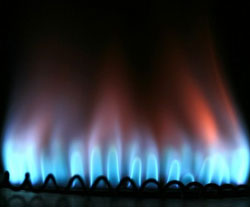
Categories
- Home
- Gas Ventilation Explained
- Commercial Gas Ventilation
- Gas Range Ventilation Requirements
- Gas Ventilation Information
- Gas Ventilation Inspection
- Gas Ventilation Regulations
- Gas Ventilation Reviews
- Gas Ventilation Safety
- Gas Ventilation System
- Home Gas Ventilation
- Rated Gas Ventilation
- Why Do We Need Gas Ventilation
- Gas Ventilation Explained
- Gas Ventilation Suppliers
- Types Of Gas Ventilation
Gas Ventilation Safety
Gas ventilation safety is an issue that needs to be taken into account, the minute that you accept to have a gas heater or central heat in your home. Gas ventilation information and gas ventilation safety are two factors related with gas ventilation and directly affect people. Proper usage of gas appliances is crucial for their effective operation. Ventilation becomes more valuable when unflued appliances are in use, simply because flueless heaters should never be kept in a room that has no ventilation system. Moreover, flueless heaters have certain restrictions in regards to their installation, and that is why they need to be thoroughly checked by a licensed contractor.
Gas Ventilation Safety Measures:
Surely, there are numerous measures that can be taken into account when discussing gas ventilation safety. Some of the most important measures are:
- Walls should be checked for discoloration as it may be a sign of blocked flue. Report immediately as it may lead to spilling of combustible products, which in turn can cause carbon monoxide poisoning. Turn the appliance off immediately.
- Gas fitter should be called regularly in order to check for blockage or holes in the flue, as it may lead to spilling of gases in the room instead of the safe disposal.
- The flue cowl should be checked for obstruction. Entry of worms and birds should be avoided as they tend to create obstruction.
- Flue terminal should be free of plant growth to prevent obstruction.
- Rooms with gas cookers should be well ventilated because the heat produced could make the room stuffy and the air can turn stale.
- Water vapor deposited on the walls and ceiling results in the growth of bacteriaand mildew, which can destroy the walls of your basement.
Do not Ignore Gas Ventilation Safety Measures:
Respiratory problems arise due to the inhalation of carbon monoxide and other harmful gases. Young children need a healthy environment to grow, which if not provided can affect their physical and physiological growth significantly. Even though water vapor is not a pollutant, it can lead to the growth of several impurities, such as bacteria and fungi. Emission levels vary depending on many factors, such as the size of the room, the use of the room and of course, the adequate ventilation of the room.
Follow Gas Ventilation Safety Instructions
Vents should always be kept free of dirt and highly maintained, especially because dirt leads to blockage of inlets, which can block the air flow. A room that is used for a long period of time should be fitted with flued appliances because flueless ones are extremely risky. Furthermore, mobile unflued gas heaters should be avoided as well, because there is a greater risk of fire and gas poisoning. However, when it comes time to servicing the heater, it’s vital that you do so at the beginning of every single station.Finally, make sure you keep your environment safe and healthy, especially because the Earth’s age is directly proportional to your very own health and age
